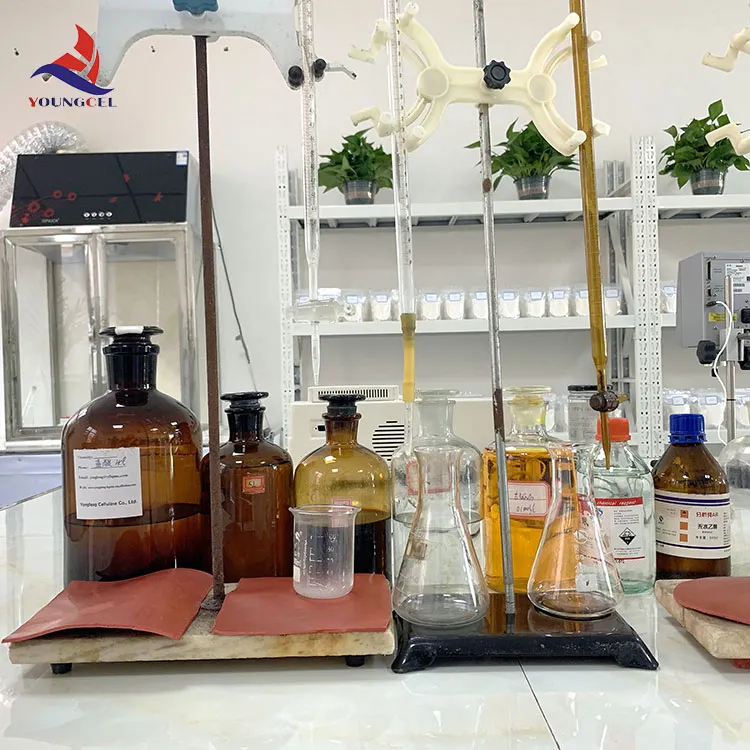Hydroxypropyl Methyl Cellulose (HPMC) A Versatile Polymer
Hydroxypropyl Methyl Cellulose (HPMC) is a widely used cellulose derivative that has gained significant popularity in various industrial applications due to its unique properties. It is a non-ionic, water-soluble polymer derived from the cellulose of wood or cotton fibers. HPMC serves as a crucial ingredient in diverse fields, including pharmaceuticals, food, cosmetics, and construction, owing to its functional characteristics.
One of the most notable features of HPMC is its thickening and stabilizing properties. In the pharmaceutical industry, HPMC is extensively utilized as an excipient in drug formulations. It acts as a binder in tablet formulations, ensuring the proper cohesion of the ingredients. Additionally, its controlled release properties make it a preferred option for preparing extended-release formulations, allowing for a gradual release of the active pharmaceutical ingredient (API) over time. This property enhances patient compliance by reducing the frequency of dosages required.
Hydroxypropyl Methyl Cellulose (HPMC) A Versatile Polymer
In the food industry, HPMC is valued for its emulsifying and thickening properties, making it an ideal additive for processed foods. It helps stabilize sauces, dressings, and dairy products, contributing to the desired texture and mouthfeel. As a fat replacer, HPMC allows for the reduction of calories in food without compromising taste or quality, which is a significant advantage for health-conscious consumers.
meilose hydroxypropyl methyl cellulose(hpmc)

Moreover, HPMC’s role in the cosmetic industry cannot be understated. Its film-forming capabilities and emulsifying properties make it a key ingredient in lotions, creams, and gels. It helps enhance the texture and hydration of these products, providing a smooth application experience. The stability it imparts to various formulations extends shelf life and ensures consistency, making it favorable for manufacturers and consumers alike.
Beyond personal care and food, HPMC finds applications in the construction industry as well. It is commonly used in cement-based products, such as tile adhesives, plasters, and grouts. In this context, HPMC improves the workability and adhesion of construction materials, ensuring better performance and durability. Its water retention properties also contribute to prolonging the open time of mortars and enhancing the curing process.
Environmental considerations are increasingly important in today’s market, and HPMC stands out for its environmentally friendly profile. As a plant-based polymer, it is biodegradable and can be produced without the use of harmful solvents. This aligns with the growing demand for sustainable and eco-friendly products across various industries.
In conclusion, Hydroxypropyl Methyl Cellulose (HPMC) is a multi-faceted polymer with numerous practical applications spanning several industries. Its characteristics, such as thickening, stabilizing, and emulsifying properties, make it an indispensable ingredient in pharmaceuticals, food, cosmetics, and construction. As research and development continue, the potential applications of HPMC are expected to expand further, reinforcing its importance in various sectors while meeting modern needs for sustainability and efficiency. The ongoing exploration of its properties ensures that HPMC will remain relevant and valuable in the evolving landscape of material science and product development.
-
Premium Detergent Grade HPMC Hydroxypropyl Methylcellulose: Superior Thickening & StabilityNewsAug.31,2025
-
HEC 100000 Hydroxyethylcellulose for Paint | Superior ThickeningNewsAug.30,2025
-
Wall Putty Rdp Powder Packaging DesignNewsAug.29,2025
-
Introduction to Hpmc Hydroxypropyl Methyl CellulosNewsAug.29,2025
-
Hpmc Industri Grade IntegrationNewsAug.29,2025
-
How to Choose the Right Construction AdhesiveNewsAug.29,2025




